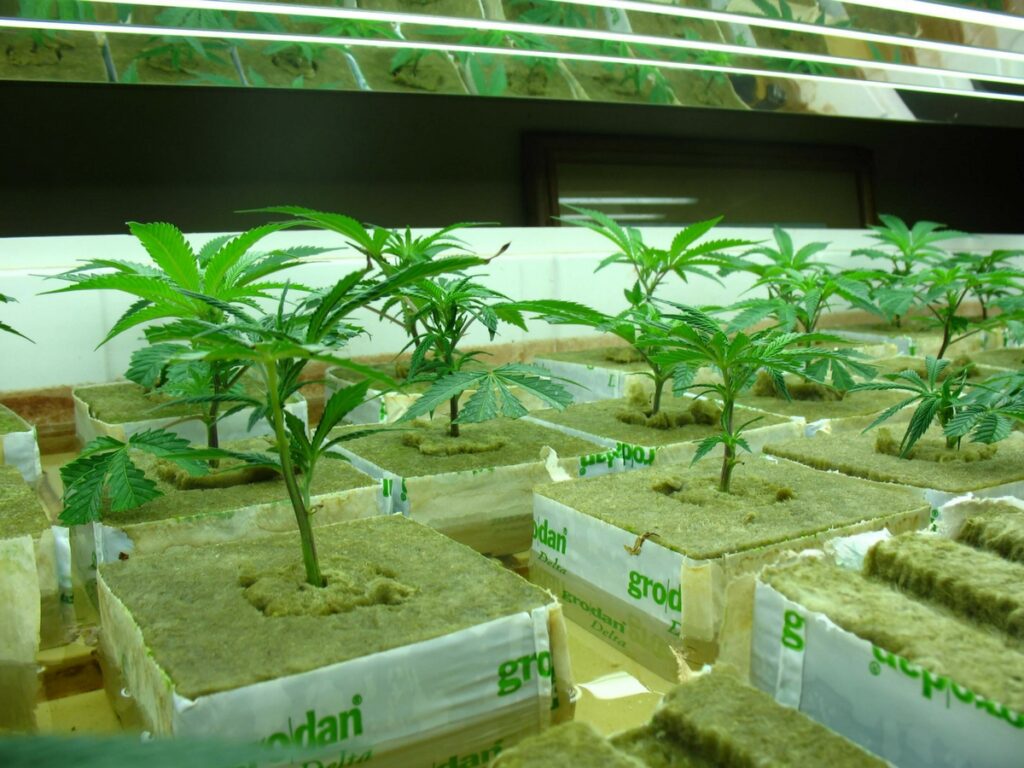
The vegetative phase
In this phase, the plants are illuminated 18 hours per day, and kept in darkness 6 hours per day. If all aspects are in order, (sufficient light, proper ventilation, good temperature, enough water and nutrients, in short: complete climate control), the plants will grow quickly; up to 5 cm per day. The duration of the vegetative stage is strongly dependent on the control of climate. The better the climatic conditions, the earlier the cutting takes root. The vegetative phase lasts from 3 to 10 days at maximum. We’ll discuss growing 15 plants per square meter. If we want to use the surface area to the maximum, then we must prune the plants; – break off the uppermost part. pruning is possible only with plants that have rooted and begun to grow. If this is not the case, breaking or clipping the tops off should be postponed for a couple of days. By pruning the plants, we ensure that they not only grow tall, but wide, as well. After cutting off the tops, we leave the plant in the vegetative stage (18-hour cycle) for a few more days. When the off-shoots have grown 3-4 cm, we start the generative phase. If all goes well, three or four large tops will then form on each plant. Then we’re ready to get around 50 tops per square meter. To get a wider plant, you can now break off the top-most part of the plant. Further pruning is not necessary. Pruning makes the plant grow fuller. That’s not to say you get a bigger plant, because you’ve also taken something away . Since the vegetative phase lasts only a short time, the plant must quickly make up for the damage. After pruning the top, two new branches will appear from the budding sight just under the spot where the top was. Be very careful with pruning; it’s a more painful experience for a plant than trimming your own nails After pruning, it’s not unlikely for growth to be delayed for a few days. It needs no further explanation that a clean, razor-sharp knife or garden scissors should be used. Actually, we can only think of one good reason for pruning. When branches don’t grow well, or are sickly or too thin, in short; unhealthy, you can, of course, carefully remove them. With pruning, it always involves the removal of the whole branch. Take care to touch the leaves as little as possible. That can easily disturb the workings of the stomata in the leaves. Some people swear by removing leaves in order to allow more light to reach other leaves. This is necessary; moreover, part of the growth capacity is lost. It’s also unnecessary to remove dying leaves. You only have to clear these away after they’ve fallen off the plant. Picking them off earlier might again cause damage to the plant…

